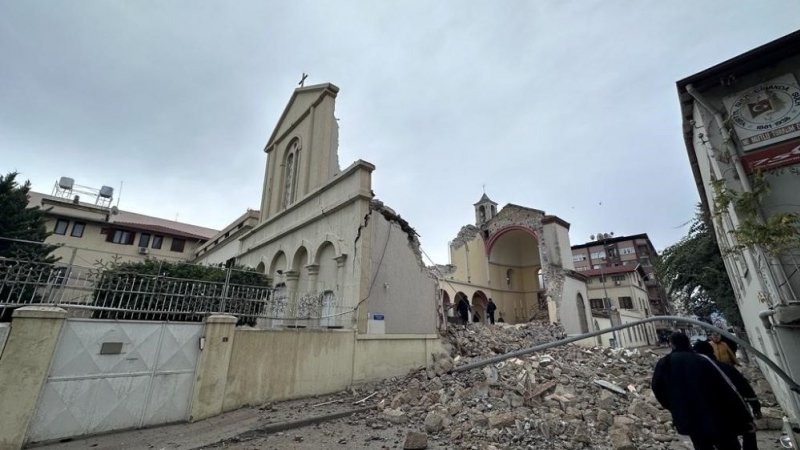The Earthquake in Turkey and Syria and the Damage to Heritage Sites
By Katriona Hannah
Two high-magnitude earthquakes occurred in Turkey and Syria on February 6th. The death toll has now passed 15,000. The severe 7.8 magnitude earthquake and its 7.5 magnitude aftershock have destroyed buildings all over the affected areas while also damaging or almost completely destroying ancient heritage sites in southern Turkey and northern Syria.
The 2,200-year-old Gaziantep castle, built by the Romans and later expanded by the Byzantine Emperor Justinian I, suffered severe damage. Several of its bastions were destroyed including the retaining wall next to the castle. Large cracks have appeared in other bastions. The 17th-century Şirvani mosque’s dome and one of its walls have also collapsed. There are reports, too, on the almost complete destruction of the 19th-century Cathedral of the Annunciation in Iskenderun; UNESCO has also reported damage to the fortress in the Turkish city of Diyarbakir.
Iskenderun’s Cathedral of the Annunciation. Credit: FSSPX.NEWS
In Syria, the ancient city of Aleppo (already severely scarred by the war) has been hit with the same earthquake. It is considered to be one of the world’s oldest continuously inhabited cities, having been ruled by Hittites, Assyrians, Akkadians, Greeks, Romans, Umayyads, Ayyubids, Mameluks and Ottomans. Photographs released from Aleppo show cracks in one of the mosque minarets located inside the citadel.
A minaret of a mosque in Aleppo’s UNESCO-protected citadel. Credit: The Times of Israel
UNESCO’s general director Audrey Azoulay has said the organisation will provide assistance to a few sites on their World Heritage list. An initial survey of damage at those sites has already been carried out. A statement from the organisation says there are grave concerns about Aleppo’s historical architecture. It concludes that “significant damage has been noted in the citadel. The western tower of the old city wall has collapsed and several buildings in the souks have been weakened.”
Bad weather conditions, the remoteness of some of the sites and the chaos and devastation of the aftermath means information on their precise state is hard to access, although the statement also promised to “establish a precise inventory of the damage with the aim of rapidly securing and stabilising these sites”.
Considering that, as a consequence of the deadly earthquake, thousands have been killed, infrastructure and homes have been destroyed and the emergency services are working non-stop to locate and save survivors or pull out bodies from the rubble, it is unclear when any major works to save the damaged heritage sites can begin.
Bibliography
Holmes, Oliver. The Guardian, “Fears for ancient sites after earthquake destroys parts of Gaziantep Castle.” 6 February 2023, 13:41 pm. https://www.theguardian.com/world/2023/feb/06/fears-for-ancient-sites-after-earthquake-destroys-parts-of-gaziantep-castle-turkey
New York Times, “Quake Death Toll Passes 15,000 in Turkey and Syria as Desperation Builds.” 9 February 2023, 3:00 pm. https://www.nytimes.com/live/2023/02/08/world/turkey-syria-earthquake
FSSPX.NEWS, “Turkey: Iskenderun Cathedral Destroyed By Earthquake” 8 February 2023. https://fsspx.news/en/news-events/news/turkey-iskenderun-cathedral-destroyed-earthquake-79974
The Times of Israel, “UNESCO sounds alarm over earthquake damage to Turkey, Syria heritage sites.” 7 February 2023. 4:04 pm. https://www.timesofisrael.com/unesco-sounds-alarm-over-earthquake-damage-to-turkey-syria-heritage-sites/
UNESCO World Heritage Convention, “Ancient City of Aleppo”. https://whc.unesco.org/en/list/21/
UNESCO World Heritage Convention, “Earthquake in Syria and Türkiye: UNESCO offers support.” 7 February 2023. 11:00 pm. https://whc.unesco.org/en/news/2521


